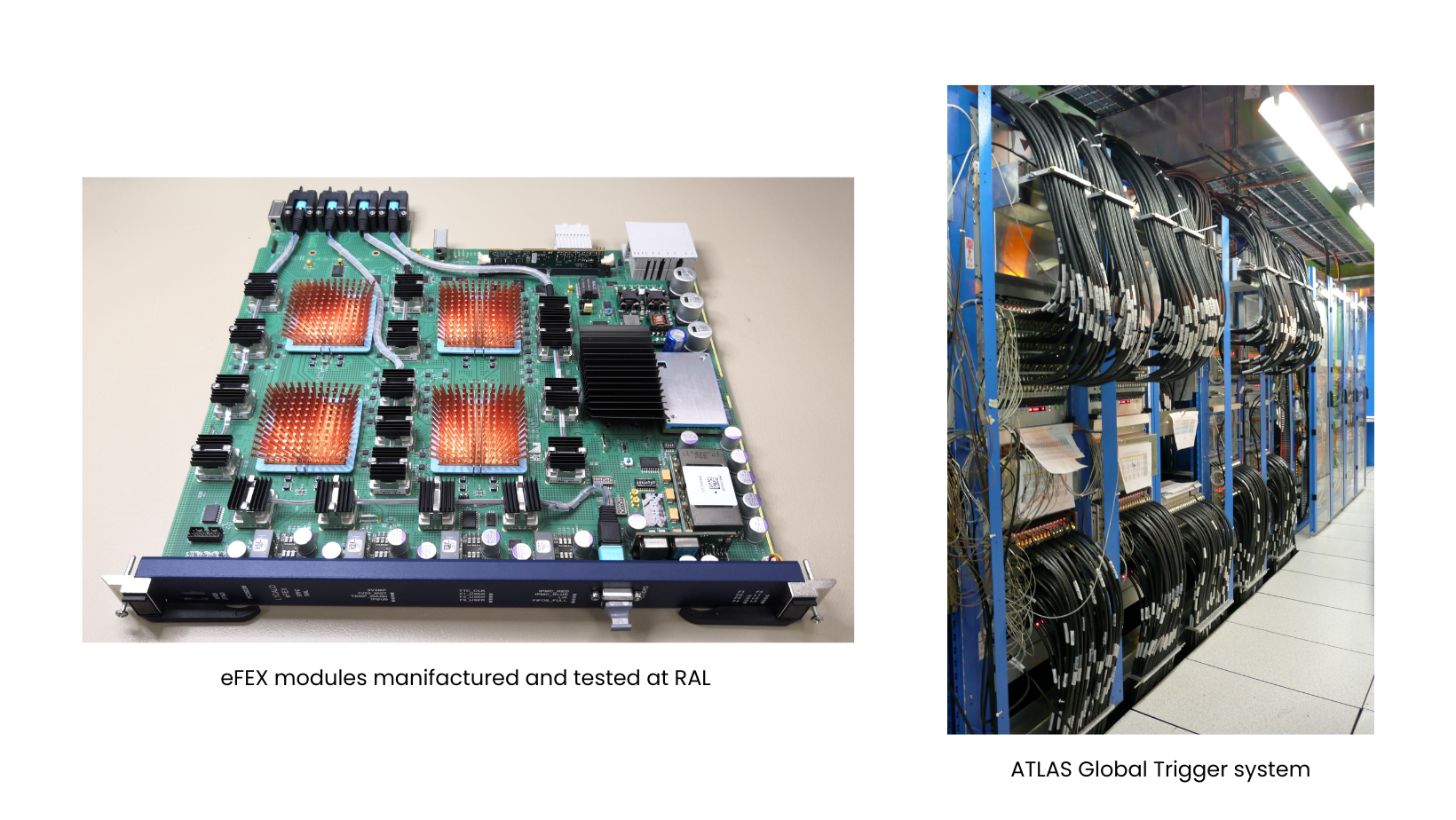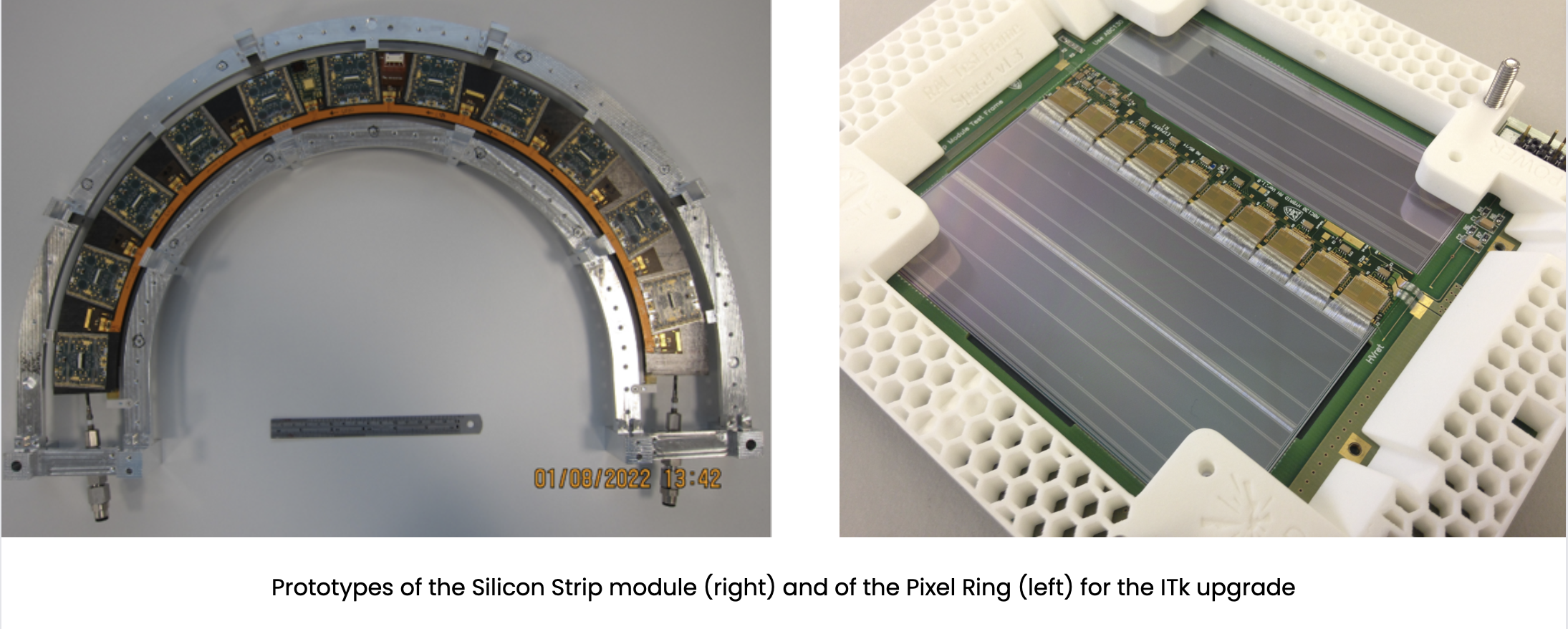L1 CALORIMETER and GLOBAL TRIGGER
The ATLAS Level-1 calorimeter trigger selects events based on fast hardware processing of signals in the electromagnetic and hadronic calorimeters.
With the project being a collaboration between UK groups from Birmingham, Cambridge and QMUL, and non-UK groups from Germany, Poland, Sweden and USA, the RAL group has played and continues to play a pivotal role in the L1Calo project, from the original Run 1 system through to the proposed upgrades for Run 4. Having built a significant part of the original L1Calo system, the UK has the responsibility to support operations at CERN, being responsible for many operational activities (e.g., software updates, calibration and test runs with calorimeters) and day-to-day run coordination. Wi th also a leading role in the Global Trigger Project for Run 4, the system will build on the information from the calorimeter and muon trigger systems, along with full granularity information from the calorimeters, to provide refined event selection in the face of intense HL-LHC backgrounds.
th also a leading role in the Global Trigger Project for Run 4, the system will build on the information from the calorimeter and muon trigger systems, along with full granularity information from the calorimeters, to provide refined event selection in the face of intense HL-LHC backgrounds.
In the LHC Run 3, we have been responsible, with Birmingham, for the Phase-1 Upgrade of the electron feature extractor system (eFEX), which modules identify electron, photon and tau candidates using the high granularity 'supercell' information from LAr. In addition, we have defined the L1Calo standard ATCA backplane usage and communication protocols, along with a custom board shape to better address the demanding data I/O requirements of the trigger. Hosting Ral the principal UK L1Calo integration and testing centre, the ATLAS PPD group has taken a leading role in the operation of the Surface Test Facility (STF) at CERN, which is needed by the L1Calo project and associated detector groups to integrate and test new hardware in a controlled environment prior to installation in the experiment.
GROUP LEADER: Robin Middleton
INNER TRACKER (ITk)
After over ten years of operation at CERN, the ATLAS inner detector will be degraded by intense radiation. This is why a new upgraded inner detector is required to allow continued detection and data acquisition at a higher rate and to withstand higher radiation environments.

The PPD group has been engaged in the development and preparation for the construction of the ITk, as part of a consortium of eleven UK universities and laboratories which will deliver the UK component of the tracker upgrade. It had responsibilities in the construction of both stave and pixel modules for the ITk, as well as simulations of the performance of the detector in the future. In particular, the local support structure of the prototype is based on carbon fibre rings. At the same time, the electrically functional detector modules (11 on each side) were mounted onto these rings using a robotic gantry system. All the assembly and testing of the modules has been undertaken at RAL in 2022, while the prototype will be tested with serial powering at Liverpool University and the cooling system will be tested at Manchester University.
Working together with the RAL TD colleagues, UK Universities and groups overseas, studies are ongoing to investigate the performance of different layouts in simulation, as investigating the efficiency of reconstructing a hard scatter vertex in high-density events such as those expected at the HL-LHC.
GROUP LEADER: Steve McMahon
